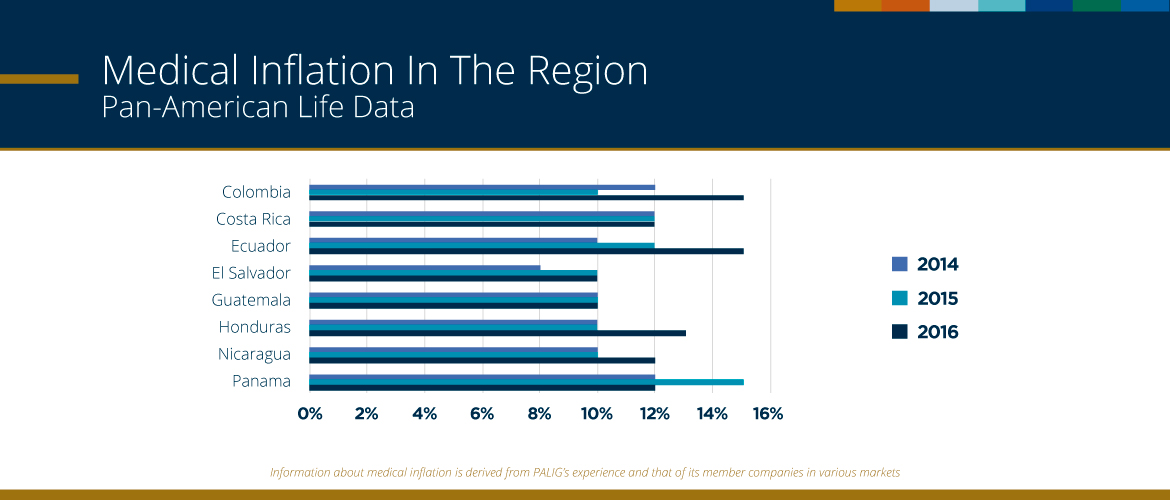26 Jun 2017
Changing the Healthcare Paradigm in Latin America
By Robb Suchecki
Medical inflation costs in Latin America have been on the rise for years now and the trend isn’t showing any signs of reversing itself. Medications are getting more expensive every year, placing a greater financial burden on consumers. This is on top of the increased costs associated to medical equipment and hospital supplies that are driving the of cost medical treatment in the region through the roof.

Inflation, however, is merely the most visible symptom of a deeper problem. The current healthcare model in Latin America is designed to react rather than prevent. As a result the healthcare providers and the insurance carriers often find themselves waiting until what can go wrong, has.
Pan-American Life recently took an in-depth look at the pressure points in Latin America’s healthcare system and among the findings documented in our report was the observation that people are spending more money on their health, but it doesn’t mean their health is improving as a result.
Time For A New Way Forward
The idea that prevention is better than cure may have been around for centuries but the technology and resources needed to build an entire healthcare model around it have not. With the current model reaching the limits of its sustainability, this is an important opportunity to change course.
The tools we have today mean we can collect, analyze, and communicate information faster and more effectively than ever before. That translates to numerous benefits, including improved coordination between doctors treating the same patient for different conditions, improved coordination between providers and insurance carriers, and an increased number of touch points at which to exert behavioral influence on consumers.
Wellness Is The Word
A crucial element of re-orienting healthcare towards prevention is wellness. Wellness initiatives, whether they are tailored to an individual based on a health risk assessment (HRA) or strategically driven by employers, are the foundation for consumer education in this arena.
The goal is to create awareness and promote wellness – both physical and mental - within the community, workplace, and home. This encourages consumers to be proactive about their health, to have more engaged conversations with their primary care physicians, and at the same time, it equips them to make smarter and more informed decisions about the treatment they seek.
A New & More Personal Paradigm
The new paradigm for healthcare in Latin America should feature improved quality control measures that allow for the standardization of a higher quality of care, and a better balance between healthcare costs and the value they deliver.
In building this more personalized model, we improve cost effectiveness, operational efficiency, and more importantly, we return health care to its core purpose – caring for people’s health.
To download our Personalized Health: An Expanding Opportunity – 2016 PALIG Trends report please click here.
Robb Suchecki is PALIG’s Vice-President – International Health. He is based in Panama.


